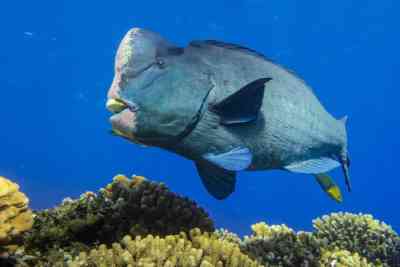Nature is an endless source of wonder and amazement, and its creatures never fail to surprise us. When it comes to animals that do not have legs, most people would automatically think of snakes, and for good reason. Snakes are one of the most well-known and recognizable legless animals, but they are far from the only ones.
Table of Contents
There are a variety of other fascinating creatures that are able to move without the aid of legs. From the sinuous movements of eels and lampreys to the wriggling of worms and caterpillars, these creatures demonstrate incredible adaptability and resilience. No matter how often we encounter them, animals without legs never cease to be interesting and unique.
List of Animals With No Legs
Molluscs

Molluscs encompass a diverse array of invertebrate species, characterized by their lack of bones or vertebral columns. These creatures possess unsegmented, soft bodies, placing them among the ranks of legless animals. With a staggering number exceeding 100,000 species worldwide, molluscs predominantly inhabit moist and aquatic environments, ranging from oceans to freshwater habitats.
Among the well-known representatives of legless molluscs are snails, mussels, oysters, clams, squid, and octopuses. It is worth noting that squids and octopuses, though lacking legs possess tentacles that serve multiple purposes, including grasping objects and sensing their surroundings.
Many mollusc species boast protective shells, offering them a sturdy shield. Additionally, their bodies commonly exhibit a slimy and fleshy texture, contributing to their distinctive characteristics.
Pinnipeds

Contrary to appearances, seals, sea lions, and walruses do not possess legs but rather flippers. These marine mammals, collectively known as pinnipeds, derive their name from these distinctive appendages. Despite their predominantly aquatic lifestyle, these limbless creatures exhibit remarkable agility and endurance on land.
Pinnipeds utilize their flippers to navigate effortlessly in both terrestrial and aquatic environments. Seals, in particular, employ their front flippers to propel themselves out of the water and manoeuvre on land. While seals are relatively smaller and more adapted to aquatic life, their movements on land resemble those of caterpillars. On the other hand, sea lions and walruses exhibit greater ease and flexibility in locomotion on land, thanks to the ability to rotate their hind flippers.
Fish

Fish are indeed animals! Despite our confusion in the past, scientific classification has determined that fish are aquatic animals, with a backbone. However, in case you were wondering, they don’t have legs. Most species of fish have fins instead, which allow them to move and navigate through the water. While some recent discoveries have found a few types of fish with legs, these are quite rare exceptions. So, if you were planning on taking your pet fish for a walk, you might need to rethink that idea!
Earthworms

The earthworm, a creature that moves without the use of legs, is a fascinating animal. Without bones, arms, or even eyes, earthworms rely on a set of bristles called setae to prevent slipping as they crawl through the soil. Their speed of movement varies among species, with larger earthworms moving faster than smaller ones.
These limbless creatures are also hermaphrodites, meaning they have both male and female reproductive organs. Despite their lack of traditional physical features, earthworms are essential to the ecosystem as they help to decompose organic matter, aerate the soil, and promote healthy plant growth.
Snakes

When we think of legless animals, the first creature that comes to mind is a snake. But have you ever wondered how these reptiles are able to move without legs? With scales on their body and strong muscles, snakes are able to slither effortlessly across the ground. Their scales provide grip and their muscles push against the ground to generate movement.
Additionally, snakes have no external ears and rely on vibrations through the ground to hear. These fascinating creatures also cannot regulate their body temperature independently and need to depend on their surroundings to keep warm or cool. So next time you encounter a snake, remember that despite their lack of legs, they are incredibly skilled at getting around!
Legless Lizards

Legless or limbless lizards may seem like snakes, but they are actually separate species with their own unique characteristics. These reptiles are often mistaken for their slithery cousins, but they are actually far less dangerous than snakes. There are more than nine species of legless lizards in existence, with the most well-known being the Slow Worm and Worm Lizards.
Slow Worms are legless lizards that are native to the UK and are also known as blindworms due to their small eyes. Worm Lizards, on the other hand, are the most common out of over 200 legless lizard species. These remarkable creatures may not have legs, but they have adapted in their own unique ways to flourish and survive.
How to differentiate a legless lizard from a snake?
Legless or limbless lizards, despite their resemblance to snakes, are distinct creatures without legs. It is common for them to be mistaken for venomous snakes, but there are several key differences to help you distinguish between the two and avoid causing harm unintentionally:
- Eyelids: Legless lizards possess eyelids, while snakes do not. If you observe a legless lizard closely, you may notice it blinking, a characteristic absent in snakes.
- Hearing Mechanism: Legless lizards have an opening on their head that serves as their auditory organ. In contrast, snakes lack external openings or ears for hearing and primarily rely on sensing vibrations to detect movements.
- Jaw Opening: Limbless lizards have narrower jaw structures compared to snakes. Snakes have the remarkable ability to widen their mouths extensively to accommodate larger prey. In contrast, legless lizards typically prey on insects and small animals due to their limited jaw flexibility.
By being aware of these distinctions, you can differentiate legless lizards from snakes and appreciate the unique characteristics of these fascinating creatures without causing unnecessary harm.
FAQs
What are limbless animals called?
While there isn’t a specific name for all legless animals, each of them has a scientific and species name unique to its own. From the slithery snakes to the adorably small legless lizards, every legless animal is a true testament to the adaptability and resilience of nature. It’s incredible to see how these animals have managed to thrive in their legless forms, fascinating scientists and animal enthusiasts alike.
Are there any limbless mammals?
The answer lies in the way their vertebral columns are designed. Unlike legless animals, mammals cannot move their vertebrae laterally, making it difficult for them to slither or crawl without limbs. This is due to the rigidity and shortness of their vertebral columns, which allow for limited movement.
What animal has the most legs?
With an astonishing 1,300 legs, the world’s leggiest animal makes its home deep underground. These invertebrates may resemble earthworms, but they play a critical role in our ecosystem – decomposing plant material. Without millipedes, dead organic matter would pile up, creating a toxic environment for other organisms.
Final Words
Mother nature truly is amazing, especially when it comes to limbless animals. While it may seem like they are helpless creatures, they have actually evolved in the most unique ways to perfectly fit into their environments. Take for example the snake, which has no legs, yet can move swiftly and gracefully through the grass. Or the worm, which may seem small and insignificant, but plays a huge role in soil health. These animals are not to be underestimated, as they have adapted to survive and thrive without legs.
Reference:
- https://www.esi.utexas.edu/files/039_Learning_Module_Snake_Facts.pdf
- https://www.elephantnaturepark.org/interesting-and-fascinating-facts-about-elephants-feet-and-legs/
- https://brainly.in/question/11889467

Zahra Makda
Growing up enjoying the beauty of my village, a good passion for nature developed in me from childhood. Following my passion for the natural world, I have chosen zoology for my graduation, during my undergraduate degree, I participated in many nature trails, bird watching, rescues, training for wildlife conservation, workshop, and seminars on biodiversity. I have a keen interest in invertebrate biology, herpetology, and ornithology. Primary interests include studies on taxonomy, ecology, habitat and behavior.









